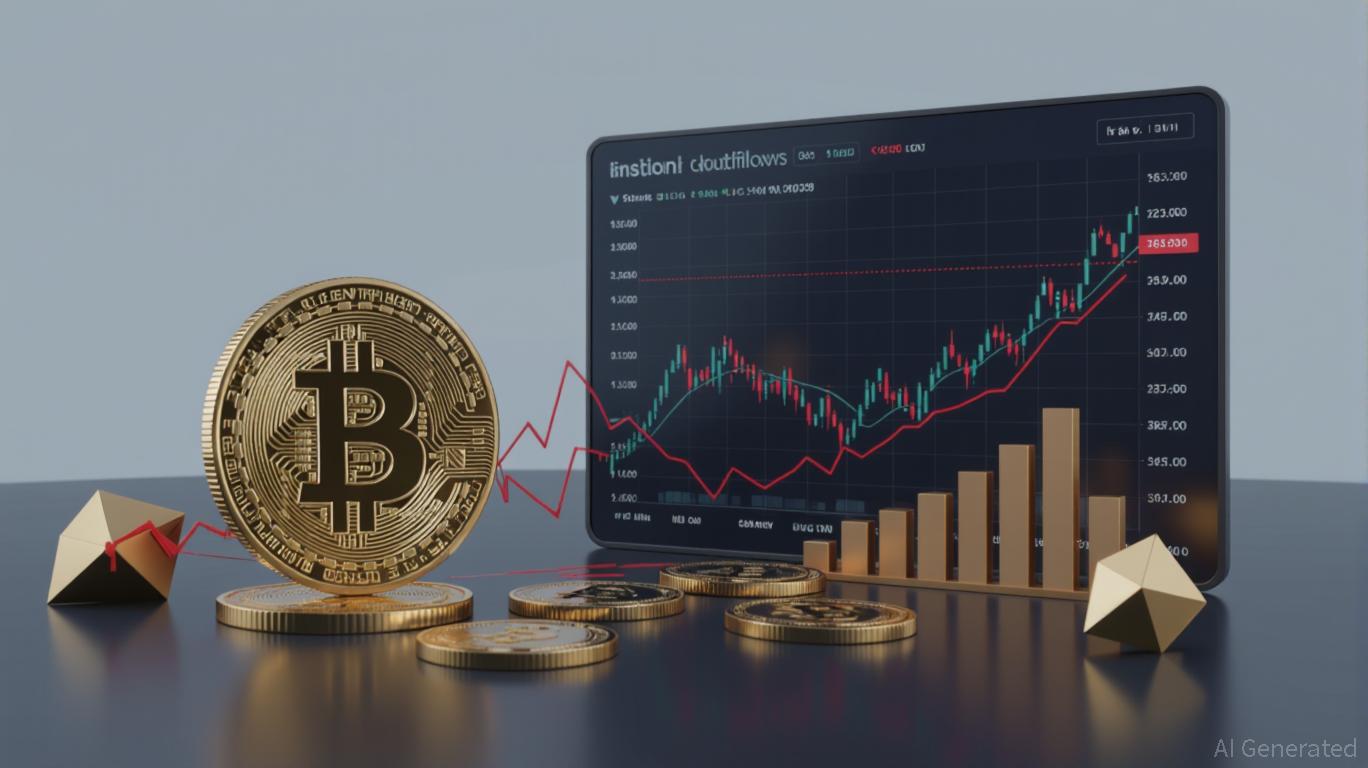TWT's Updated Tokenomics Framework: Transforming DeFi Governance and Enhancing Investor Yields
- Trust Wallet's TWT token redefines DeFi governance through utility-driven value creation, deflationary supply, and community governance in 2025. - Permanent burning of 88.9 billion tokens creates scarcity, while gas discounts, collateral capabilities, and governance rights align utility with platform adoption. - Hybrid investor returns combine scarcity-driven appreciation, staking yields, and fee-burn mechanisms, but depend on Solana ecosystem performance and utility adoption. - Challenges include fragme
Token Distribution Overhaul: Emphasizing Utility and Rarity
The 2025 tokenomics plan for TWT moves away from speculative rewards and centers on practical use cases. A key part of this shift was the irreversible burning of 88.9 billion tokens soon after its 2020 debut,
The token’s usefulness is further increased by its role in essential platform operations. TWT owners now benefit from
Governance Structure: Strengthening Holder Influence and Incentive Alignment
While decentralized governance is a core principle of DeFi, it often suffers from low engagement or dominance by major holders. TWT’s 2025 framework aims to resolve this by making governance an integral part of the token’s function. Token holders are empowered to vote on matters such as platform improvements, fee models, and ecosystem collaborations,
Aligning incentives is crucial. By connecting governance involvement with token benefits—like
Investor Benefits: A Comprehensive Value Approach
For those investing in TWT, the tokenomics introduce a multi-layered return system. The deflationary supply, together with a loyalty initiative that reallocates rewards from the current token pool,
These elements point to a blended return model: price growth from increased scarcity, earnings from staking and governance, and demand driven by practical platform use. Nonetheless, the effectiveness of this model relies on ongoing adoption of TWT’s features and the overall strength of the

Potential Obstacles and Points to Consider
Despite TWT’s forward-thinking design, it faces several challenges. The success of its governance relies on broad user involvement, which can be tough in the diverse DeFi sector. Moreover, TWT’s performance is indirectly linked to the stability of the Solana blockchain, exposing it to external risks. Investors should also consider the balance between utility-based value and price volatility, as DeFi tokens are still vulnerable to economic trends and regulatory changes.
Final Thoughts
The 2025 tokenomics of TWT represent a significant rethinking of DeFi governance and investor incentives. By rooting value in utility, scarcity, and active community involvement, the model tackles major industry challenges. However, its long-term viability will depend on effective implementation—especially the ability to grow utility adoption and strike a balance between innovation and stability. For investors, TWT stands as an intriguing example of how thoughtful token design can reshape the DeFi sector.
Disclaimer: The content of this article solely reflects the author's opinion and does not represent the platform in any capacity. This article is not intended to serve as a reference for making investment decisions.
You may also like
Fed Weighs Job Growth Against Inflation Concerns in 2026 Interest Rate Decisions
- The Fed plans two 2026 rate cuts amid weak labor markets and stubborn inflation, balancing job support with inflation risks. - Internal FOMC divisions persist, with Vice Chair Jefferson advocating caution and Governor Waller pushing for aggressive cuts, while Trump’s appointee Miran amplifies easing pressure. - Incomplete data from a government shutdown complicates decisions, and market expectations for a December cut dropped to 42.9% amid inflation concerns. - J.P. Morgan urges diversification to hedge

Bitcoin News Update: The Cryptocurrency Market's Ongoing Struggle: Careful Hopefulness Against Persistent Threats
- Crypto market shows stabilization as funding rates on major exchanges return to neutrality after overselling, per Coinglass data. - Bitcoin's 14-day RSI dipped below 30 (oversold level) on Nov 18, suggesting potential short-term rebound despite analysts' caution. - Institutional interest grows with Ark Invest adding $10.2M in Bullish shares, while Hyperliquid (HYPE) shows on-chain resilience. - Macroeconomic risks persist, including U.S. government shutdown impacts and stalled ETF inflows, keeping $95,00

Bitcoin’s Steep Drop: An Ideal Combination of Economic Headwinds and Systemic Threats
- Bitcoin's 30% plunge from its October 2025 peak exposed systemic risks amid Fed's restrictive policy and 3% inflation persistence. - $1.27B in leveraged liquidations and CFTC's spot trading plans amplified volatility, linking crypto risks to traditional finance. - Institutional buyers like MSTR continued aggressive BTC accumulation, raising questions about market distortion during crises. - Investors must monitor Fed policy shifts, regulatory clarity, and leverage management as crypto's systemic vulnerab

Drivers of the Latest BTC Downturn: Institutional Withdrawal or Excessive Market Correction?
- Bitcoin's recent crash reflects $3.2B in institutional outflows since October, driven by liquidity stress and macroeconomic uncertainty. - Major ETFs like BlackRock's IBIT ($463M) and Fidelity's FBTC face massive redemptions as investors recalibrate risk profiles amid tightening financial conditions. - Structural shifts like Singapore's institutional-grade crypto futures signal long-term optimism, but coincide with Fed's restrictive policy (3% inflation) forcing deleveraging. - The correction appears liq
